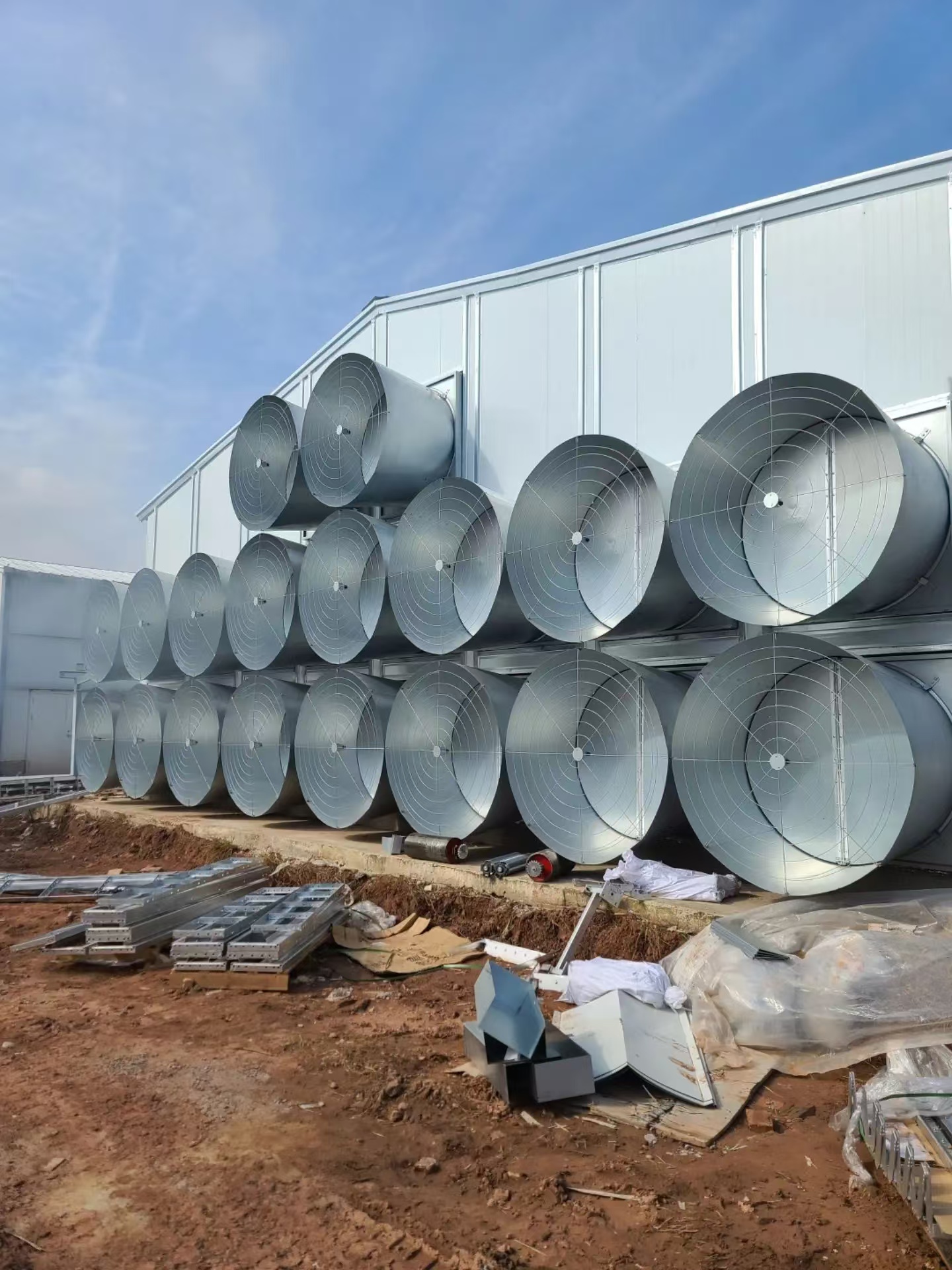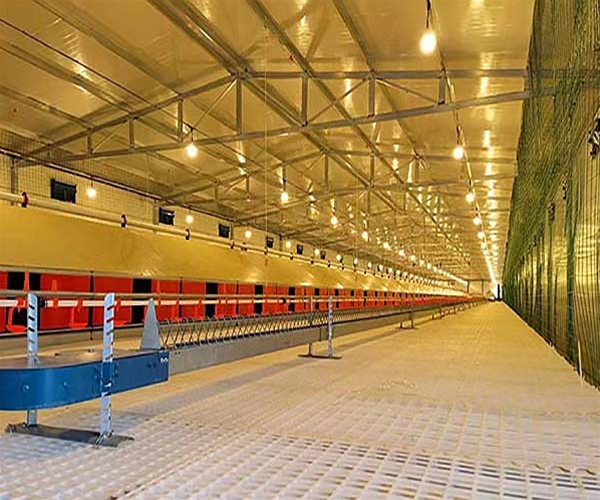As agricultural technology advances, intelligent temperature control systems have become essential in modern livestock farming. These systems help farm owners manage temperature and humidity effectively. They also improve the comfort of the farming environment, boosting production efficiency and enhancing animal welfare. This article will explain how intelligent temperature control systems can create optimal conditions for animal growth.
What is an Intelligent Temperature Control System?
An intelligent temperature control system is designed to regulate temperature, humidity, and air circulation automatically. It typically includes environmental controllers, temperature and humidity sensors, water curtains, fans, ventilation windows, heat lamps, and heat blowers. These devices work together to monitor and adjust the farming environment in real-time. The system ensures that conditions remain ideal for the animals.
Temperature control systems are critical in modern farming. Temperature, humidity, and air quality directly affect animal health, productivity, and breeding. If temperatures are too high or too low, animals may experience slow growth, reduced immunity, or even disease outbreaks. Intelligent temperature control systems not only help increase yield but also support animal welfare.
How Intelligent Temperature Control Systems Improve Livestock Comfort
1. Coordinated Role of Fans, Water Curtains, and Ventilation Windows
Controlling temperature and humidity is crucial for animal health. Fans, water curtains, and ventilation windows are essential for this process. These devices work together to regulate temperature and humidity by enhancing airflow and providing evaporative cooling.
- Cooling in Summer: In hot weather, water curtains use evaporative cooling to absorb external heat and reduce indoor temperatures. Fans draw air through the water curtains, increasing airflow and enhancing cooling. This “water curtain + fan” system helps maintain a comfortable temperature and optimal humidity. Ventilation windows increase airflow and improve air quality, preventing respiratory issues caused by excess moisture.
- Heating in Winter: Fans and water curtains are primarily used for cooling in the summer, but they are still useful in winter. By adjusting fan speeds, airflow is maintained, and moisture buildup is prevented. Heat lamps and heat blowers can be used to keep the environment warm. Ventilation windows automatically open or close based on the weather, helping to regulate indoor air freshness and humidity.
Together, these devices ensure stable temperature control and prevent excessive dryness or humidity, providing an ideal environment for animal growth.
2. Automated Adjustment and Precise Monitoring
Intelligent temperature control systems offer automation and precise management. Through sensors and environmental controllers, the system continuously monitors temperature, humidity, and air quality. Based on the data, it adjusts the operation of fans, water curtains, and ventilation windows.
For example, when the temperature rises, the system will increase fan speed and adjust water curtain humidity to help cool the environment. If the temperature drops, it reduces fan speed and activates heat lamps or heat blowers to maintain warmth. This automation ensures that the environment remains optimal for the animals.
3. Reducing Manual Effort and Lowering Labor Costs
Traditional temperature control systems require frequent manual adjustments. In contrast, intelligent systems operate autonomously, reducing the need for constant monitoring and manual intervention. These systems ensure the environment stays within ideal conditions around the clock.
As a result, farm workers don’t have to spend time making frequent adjustments. This reduces labor costs and minimizes human error. The system does the work automatically, ensuring accurate temperature control and a stable environment for the animals.
4. Data Analysis and Optimization
Modern intelligent temperature control systems are equipped with advanced data analysis capabilities. They collect real-time data on temperature, humidity, and air quality. Farm owners can use this data to identify potential problems and make adjustments as needed. Over time, data analysis helps optimize the operation of fans, water curtains, and ventilation windows.
The system can analyze external conditions, such as seasonality and animal growth stages. It will then automatically adjust the system settings to maintain an optimal, energy-efficient environment.
Benefits of Intelligent Temperature Control Systems
1. Increased Productivity
Providing a comfortable, healthy environment can boost animal productivity. Intelligent temperature control systems create optimal conditions for animals to thrive. As a result, animals grow faster, experience fewer health issues, and are less prone to disease. This leads to higher production efficiency and profitability for farm owners.
2. Enhanced Animal Welfare
The primary goal of temperature control systems is to improve animal welfare. Animals thrive in stable, comfortable conditions. By managing temperature and humidity levels, intelligent systems reduce stress and improve the animals’ immune systems. These systems help prevent health problems caused by unfavorable environmental conditions, thus reducing mortality rates.
3. Energy Efficiency and Emissions Reduction
Traditional temperature control methods often waste energy. Intelligent temperature control systems, however, adjust equipment operation according to actual needs, avoiding unnecessary energy consumption. For example, the system adjusts the fans, heat blowers, water curtains, and ventilation windows based on external temperature and humidity.
This intelligent energy management reduces the cost of operation and supports sustainable farming practices. It also helps meet environmental protection goals by reducing emissions and energy consumption.
4. Reduced Management Costs
Traditional temperature control methods rely on constant manual supervision, leading to higher management costs. Intelligent systems, however, handle monitoring and regulation automatically. This reduces the need for human intervention and lowers overall management expenses.
Farm owners can focus on other critical aspects of their operations, knowing that the temperature control system will manage the environment efficiently and accurately.
The Future of Intelligent Temperature Control Systems
With advancements in the Internet of Things (IoT) and Artificial Intelligence (AI), intelligent temperature control systems are becoming more sophisticated. Future systems will not only regulate temperature and humidity but will also integrate with other farming technologies, such as automated feeding systems and manure removal systems.
AI will enable these systems to make more precise adjustments based on the health and growth stages of animals. This will allow for even more personalized environmental management, improving both production efficiency and animal welfare.
Conclusion
Intelligent temperature control systems are essential in modern livestock farming. By automating temperature and humidity regulation, enhancing airflow, and analyzing environmental data, these systems provide a comfortable, stable environment for animals. This improves productivity and animal health while reducing energy consumption and management costs. As technology continues to evolve, intelligent temperature control systems will become even more integrated and efficient, supporting more sustainable and intelligent farming practices.


